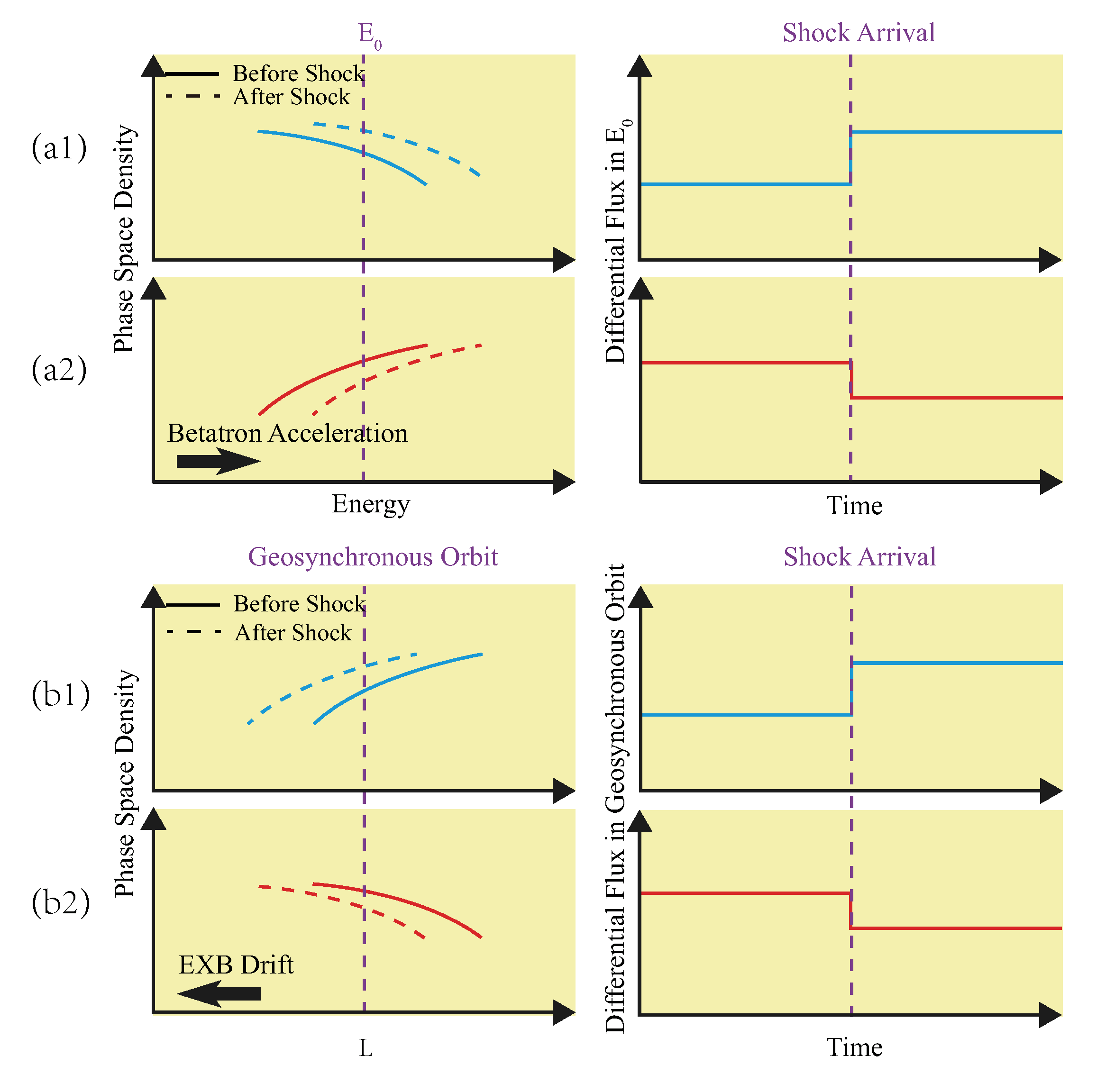Energetic electron response to interplanetary shocks at geosynchronous orbit Y. Liu1 and Q.-G. Zong1(qgzong@pku.edu.cn) 1Institute of Space Physics and Applied Technology, Peking University, Beijing, China
Interplanetary (IP) shocks have great impacts on Earth's magnetosphere, especially in causing global dynamic changes of energetic particles. In order to study the response of energetic electrons (50keV–1.5MeV) at geosynchronous orbit to IP shocks, we have systematically analyzed 215 IP shock events based on ACE, GOES, and LANL observations during 1998–2007. Our study shows that after the shock arrival low-energy electron fluxes increase at geosynchronous orbit. However, in higher energy channels fluxes show smaller increases and eventually become unchanged or even decrease. The oscillations of electron fluxes following the shock arrival have also been studied in this paper. Statistical analysis revealed a frequency preference for 2.2 mHz and 3.3 mHz oscillations of energetic electron fluxes. The amplitude of these oscillations is larger under southward interplanetary magnetic field (IMF) than under northward IMF. Furthermore, oscillations from high-energy and low-energy electron fluxes show different phase characteristics and power distributions. The phase angles of the oscillations are the same in the dawn, dusk, and noon sectors for low-energy channels (50–500keV), while they have a difference between two adjacent local time sectors for high-energy channels (0.5–1.5MeV). The wave power distribution of electron fluxes shows different dawn-dusk asymmetries for low-energy channels and high-energy channels. The results presented in this paper provide an energetic particle point of view of the magnetospheric response to the interplanetary shock impact.

This work was supported by the National Natural Science Foundation of China (41421003) and Major Project of Chinese National Programs for Fundamental Research and Development (2012CB825603). We acknowledge the Los Alamos National Laboratory (http://www.lanl–epdata.lanl.gov/lanl_ep_data/) for providing us LANL data and NASA CDAWeb (http://cdaweb.gsfc.nasa.gov/) for ACE, GOES, and OMNI data.
Liu, Y., and Q.-G. Zong (2015), Energetic electron response to interplanetary shocks at geosynchronous orbit. J. Geophys. Res. Space Physics, 120, 4669–4683. doi: 10.1002/2014JA020756.
